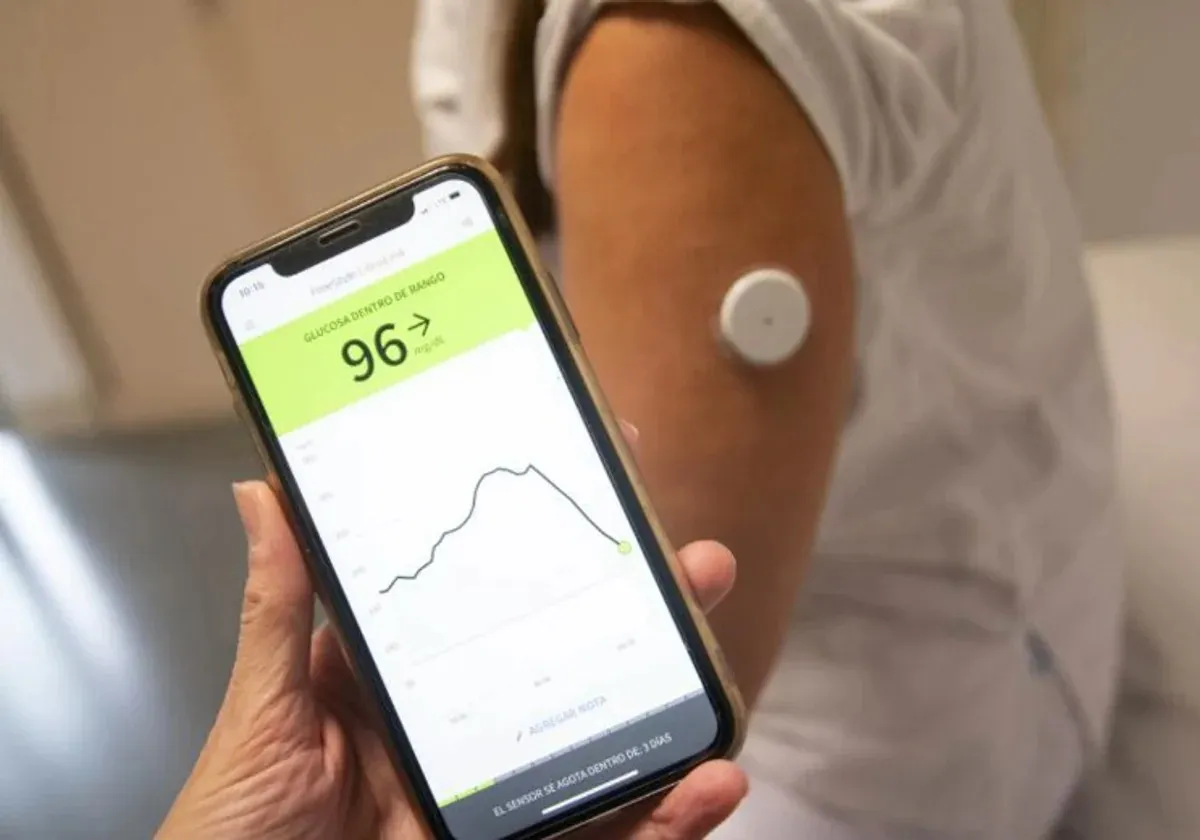The Andalusian Public Health System (SSPA), through the Comprehensive Diabetes Plan of the Ministry of Health and Consumption of the Junta de Andalucía, has implanted glucose flash monitoring systems (MFG) to more 6,000 people with diabetes mellitus in the provinceof Cádiz.Likewise, a study in patients evidenced a reduction of about 30% in emerging hypoglycemia thanks to this technology.
According to the data provided by the Board, the average age of use is 54 years and with a slight predominance in men.More than half correspond to DM1 or other forms of insulinopenic diabetes.
For patients with DM1 and other forms of diabetes, the implementation was carried out in hospital services of pediatrics and endocrinology and nutrition.However, for patients with DM2, the process was scheduled for their development between April 2022 and December 2024. This has meant an important organizational and management challenge for the number of people who opt for it and also for the characteristicsof the population, since they are elderly, as indicated by the Ministry of Health and Consumption.
MFG systems are composed of a 14 -day sensor that measures and records glucose levels in subcutaneous interstitial fluid through a monofilament equipped with enzymatic technology, making multiple measurements every five minutes transferred to an external device that carries thepatient.
Some benefits that provide these issues regarding the classical method roasted in capital glycemia controls are: fast and comfortable access, the estimated real -time blood glucose value, detailed glycometric information and sound alerts in the face of the forecast of hypoglycemia or hyperglycemia events with predefined ranges.
Ana Fernández was diagnosed with diabetes with only 9 years.From that moment 27 have passed. "It is a disease that a priori is not difficult to handle, although you have to adjust meals with the amount of insulin to have good levels," he explains.
Today is a mother and tells her day to day with this disease."There are accounts in very positive social networks that objectively argue how diabetics can lead a normal life, eat what we like and everything."But, really what is the difference between a diabetic and a person without this pathology?Ana replies that «the pancreas does not work for us and the rest does.There is a lot of ignorance and, sometimes, unfortunate comments towards us, about what yes and what does not ».
Fernández has been a mother for the first time.And the attention received has been very positive.Although it emphasizes that there has always been a taboo between the mother and diabetes "but it has helped me a lot to have a good pregnancy and excellent controls."«The monitoring from the hospital during these nine months has been admirable.I have received an exhaustive dedication and monitoring, ”he appreciates.Ordinary, this patient explains that "if the disease is controlled, you have two visits a year to the endocrine, next to the analytics and a specific test of the sight, since the eye is an organ that can be damaged with a lack of control".
As soon as the information received, Ana expresses that many communities formed from people with diabetes have been created that, in a selfless way, have provided information about the disease.He assures that "always consulting a professional."
It should be remembered that until four years ago the Junta de Andalucía did not begin to finance the glucose flash device.But since then Ana has changed the quality of life.«Through the device that is attached to the skin and an application of the phone, punctures are vitan in the fingers to see the glucose and, in addition, indicate the variability.That is, they indicatewhen a rise or a decrease approaches and it is important to have those references to avoid them and have a better control of diabetes ».
These controls appear directly in the endocrine or endocrine profile, and in medical appointments - Fernández Oase - help to adjust insulin guidelines much better.«Once Andalusia begins to finance them, it is not difficult to get it.In different from other autonomous communities, the sensors are delivered in the homes in a box with about eight devices, so they last about four months, ”he concludes satisfied with the service received.
Hugo is twelve years old and has already been diagnosed with type 1 diabetes. From that moment on, his life and that of his parents has taken a radical turn.However, the little one gives everyone a lesson and has managed to quickly move to his reality."He has internalized the need to lead a healthy life and has never protested," says his mother Ángeles.
Perhaps other problems are also initiated in adolescence, such as shame because others know that diabetes is suffered, or because they see the sensor, something that can put young people back.The parent clarifies that «I know that many boys cost a lot, especially in summer that is more visible.But our reality is that a lot has been visible.From school they also do to normalize this matter and that is what has helped my son not to have any fear of his illness ».
For Hugo, the sensor has also improved the quality of life.And it is that for the approach to diabetes the technology is being a great ally."Glucose sensors and insulin pumps have allowed control of levels more easily."In the case of Hugo, he controlled through his mother's mobile."It will be for a short time, we are going to give you a mobile because your case is special and for him it will also be something new."
This family highlights the role of many associations of people with diabetes in Cádiz because «they do a good job.They insist on the need to publicize the symptoms.It is very enriching for those who have teenagers with diabetes ».
Source: Link






